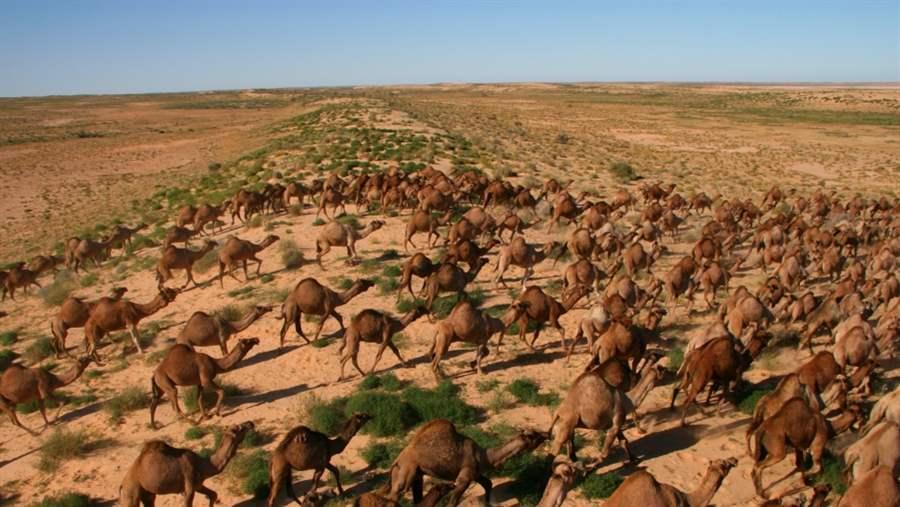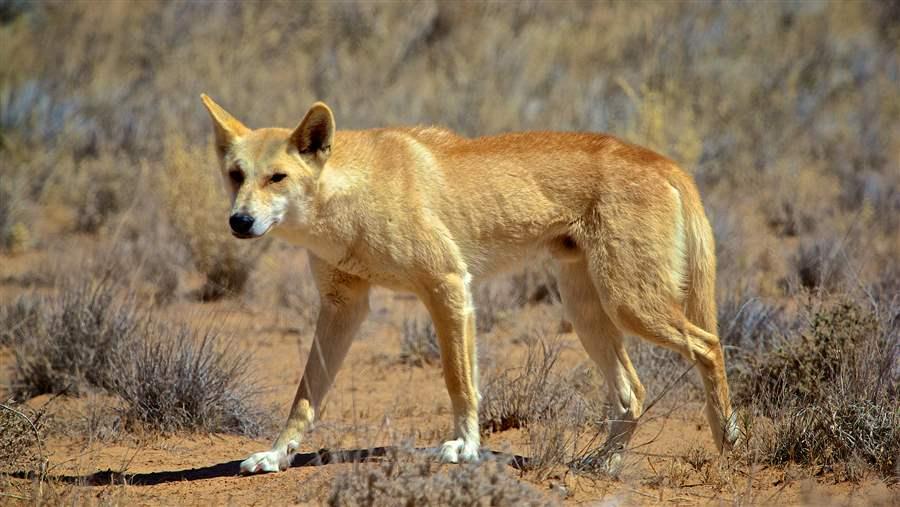Combating Invasive Species
Australia faces an extinction crisis, leading the world in the number of plants and mammals lost. Since European settlement 225 years ago, at least 30 native mammal species have disappeared. To place this number in a global context, 35 per cent of mammal extinctions in the past 400 years have occurred in Australia. And much of the loss of native mammal fauna is due to predation by feral animals such as cats and foxes.
The problem
In Australia, the spread of feral animals is largely out of control, a problem which poses serious threats to the long-term health of the Outback. With few top predators to check their numbers, these animals have moved rapidly across the continent and contributed significantly to the extinction catastrophe.
 © Robert Sleep
© Robert SleepFeral camels in the Outback.
A few examples:
- Throughout the Kimberley, the more than 100,000 feral cats are estimated to kill at least half a million native animals every night.
- Feral camels—the progeny of the 15,000 camels that came to Australia from 1870 to 1900—eat 80 per cent of available plant species and often foul water holes.
- Goats deplete the soil's protective cover of vegetation and break up the crust beneath with their hooves, which increases erosion.
- Extensive rooting by feral pigs also leads to erosion and the loss of plants needed to regenerate forests.
Possible solutions
One way to control feral populations is by increasing the number of native predators such as the dingo and Tasmanian devil.
 © Angus Emmott
© Angus EmmottThe dingo is the largest land predator in Australia.
Some ecologists advocate the reintroduction of dingoes across many areas of the Outback as ‘the most significant constraint on the destructive power’ of foxes and cats. However, dingo management in the Outback is contested.
Some pastoralists are concerned that increasing the number of these top predators will also result in larger losses of stock. To be clear, much of the predation problem for landowners, particularly those closer to urban centres, pertains to abandoned pet dogs that have become wild—and not the dingo.
Furthermore, the risk of stock losses as a result of predation by a top predator can be reduced through the use of livestock guardian dogs. Some trials by the Queensland Government's Department of Agriculture, Fisheries and Forestry, in collaboration with the Invasive Animals Cooperative Research Centre, have shown that this tactic can be successful.
The Tasmanian devil, among other top predators, can control feral animals without threatening livestock. Devils could be introduced to some mainland areas of suitable habitat that are outside the Outback to avoid competition with dingoes.
According to researcher Daniel Hunter at the University of New South Wales, “My models reveal that devils are an effective ecological surrogate for dingoes on the mainland. What's more, this idea provides a unique opportunity to establish a disease-free wild population of devils on the mainland since the devil facial tumour disease is currently a very real extinction threat for devils in Tasmania.”
Ending Australia’s extinction crisis will take creative thinking. The predatory power of dingoes and Tasmanian devils, however, may succeed in mitigating the effects of invasive, feral animals and achieving real conservation benefits for Outback Australia and other areas of the mainland.











